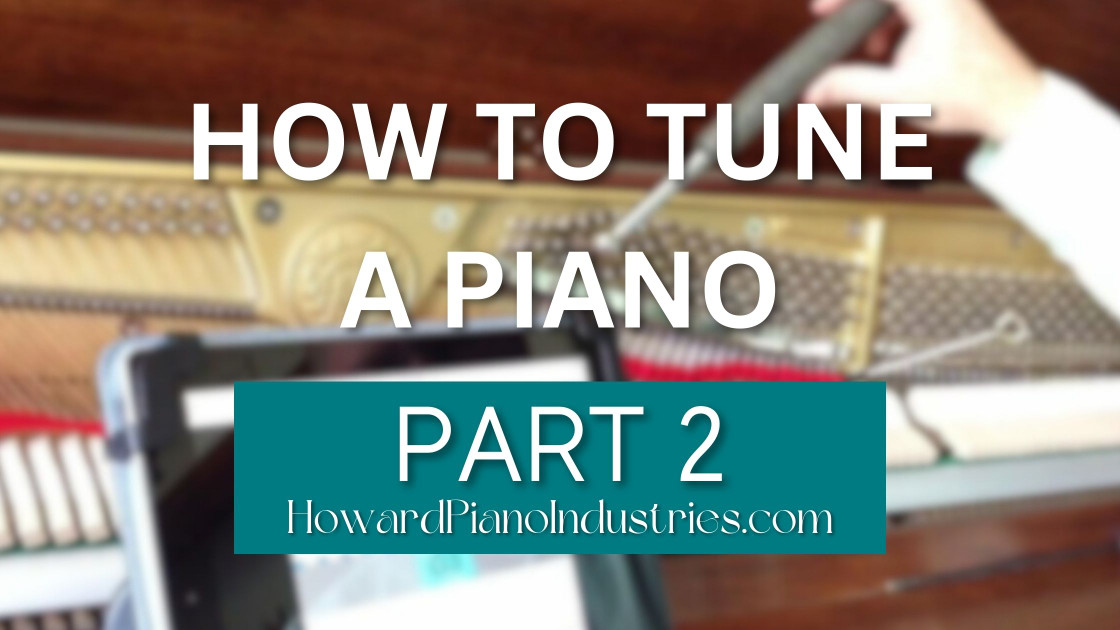How to Tune a Piano (Part 2)
Sep 18, 2023
How to Tune a Piano - Part 2: Tools Needed (Piano Tuning and Repair)
Welcome to our Series on Piano Tuning and Repair.
Part 2 in our How to Tune A Piano video series. This video goes through the basic tools needed in order to do basic piano tuning.
If you want to see more of our Piano Tuning and Repair Series, click here to access the entire playlist.
Video Transcript:
Welcome to our second video in our how to tune a piano series by Howard Piano Industries. In this video we're going to be talking briefly about the basic tools that you need to tune a piano. It's not going to be a very long video because there aren't a lot of tools that you need
Piano Tuning Hammer
Obviously, the primary tool that you need is a tuning hammer. This one here that we've got, that we sell in our store is our professional piano tuning hammer with an nylon handle. We have a number of different tuning hammers available. We've got another video that walks through all the different types of tuning hammers we have, but this is a good one. We've also got a more basic one that doesn't have an exchangeable head and tip like this one does. This one, the head comes off, and can be changed to one with different angles or a different size tip. But you want to have a good tuning hammer.
Now, when you choose a tuning hammer, you want to make sure you get one that's going to have a tip that fits well. You might see some out on the internet that are extremely inexpensive that come from China. We've seen some of those, and the tip just doesn't fit very good. The key is to have the tip tapered correctly, because piano tuning pins, the heads, the top of it, or the tip of it, is more narrow and then it tapers out as you go further toward the pin block. So having a taper that's correct, to fit those tuning pins is crucial.
Now, when you put it on there, you're not going to have generally, in most cases, one with no play at all. This one's got just a little bit of play, but that happens because tuning pins are tapered differently, so they can't make a perfect tool to fit tuning pins for every single piano because there are variances from one manufacturer, or one tuning pin manufactured to another, so you're going to find a little bit of play, but if you get a cheap tuning hammer that isn't tapered correctly or it doesn't have the tip tapered correctly then you're going to run into problems with tuning. Getting a good tuning hammer is the first step.
Rubber Mutes
The other things that you need, basically, are some rubber mutes. Here we've got a couple of rubber mutes. These are 2 and 9/16 inch by a quarter inch wide and I put some wire handles in them. It just makes it easier to to handle them and get them in between the plate and the strings. So, I usually use two of these and what I use them for is here, and in the trouble section, where it's just above the treble break and up until where the dampers stop. So that's generally where I use these and then also at the ends like in here at the end of the tenor section there, at the bottom of the tenor section, right before the base break, I'll usually use it in there or wherever I'm not using my temperament strips.
Temperament Strips
The temperament strip here is a strip of red wool felt and this is the other thing that's handy. They're not necessary but it certainly makes the job a lot faster if you can mute off all the unisons for a whole section of notes rather than having to move your rubber mutes for every single note and so that's a helpful thing to have. It's certainly worth the few dollars that you would pay for them. These are your basic tools. Obviously, there are many other tools that we've got as well as our video on piano tuning hammers.
We've got a video on all the different types of mutes and you can see that there are many other types of mutes you can use and most of them make the job easier if you get to where you're tuning a lot but if you're just starting out and you want to just get the basic tools, then all you need is a tuning hammer, a couple of rubber mutes, and a temperament strip, which is certainly helpful to have. So, these are your basic tools.
The other thing that you're going to need, based on the training that we're giving in this video series, is some kind of electronic tuning device. It doesn't have to be expensive. TuneLab actually has a shareware version you can get for free and try it out. If you like it you can even register it for a small fee, but we'll be talking about electronic tuning devices in our next video, which you can see a link for here on your screen and talk about where you can get those and how they work.

